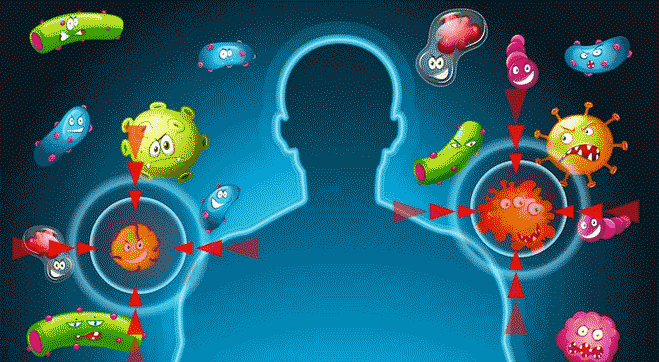In today’s world, humans are increasingly exposed to unwanted toxins due to exponentially Igrowing urbanisation, industrialisation and other anthropogenic sources. The growing urge of every industry to be bigger and better is unknowingly turning into a race causing damage to the surroundings we live in. When living and working in such an extreme environment, preventive and precautionary measures are only taken for those dangers which are visible and obvious. But what about the perils under the name of toxic elements exposure which are unseen, slowly creeping into our system, everlasting effects on our health.
Let us have a brief overview on elements and its toxicity, their effects on human health and how to detect their presence in our body so that we can safeguard ourselves from their harm.
Elements-What are they?
Elements are the basic building blocks of all living and non-living things. Every tiny or huge particle compromises of elements. Elements are categorised into two broad classes; nutritional elements and toxic elements. Nutritional elements are considered as essential nutrients and play a pivotal role in biological system; whereas toxic elements (heavy metals) have no nutritional value and have hazardous effects on human health. Essential elements serve as the catalyst, bio-stimulator, co-factor and form an indispensable structural component of a number of biomolecules. These are generally divided into macroelements or major elements such as oxygen, carbon, hydrogen, nitrogen, Sodium, calcium, Magnesium, etc. and microelements or trace elements including zinc, selenium, boron, copper, etc. Sometimes, due to possible exposures certain trace elements potentially become toxic at elevated levels.
Why should one be concerned?
toxic elements have found their way into food, water, air and soil because of their deliberate
uses for decades. We are continuously being exposed to a wide variety of toxic elements to
some degree.
Toxic elements interfere with body’s normal physiological and psychological functions and
disturb metabolic processes.
– Leads in increased free radical and reactive oxygen species generation causing inflammation.
– Toxic elements can displace and replace essential nutritional elements through a process called
molecular mimicry’
Accumulation of toxic elements in the body at significant levels can contribute towards numerous
health problems.
Sources of exposure
Toxic elements come in contact with humans majorly due to occupational or environmental exposures. Heavy-metal contamination chain follows a cyclic order – industry, atmosphere, soil, water, foods and humans. The entry of toxic elements in the atmosphere is a result of various industrial processes, where these are treated with some kind of chemical or physical process on large scale. This releases minute particles in the atmosphere. Inhalation of these airborne particles or mere contact of the metal on daily basis can show effects of toxicity. Most common industrial sources are mining, smelting (separation of metal from the ore), metal extraction, contamination by containers used for food preservation and processing and accidental process. Also, wide varieties of chemically made insecticides or pesticides are being used in agriculture, which can contaminate the soil and increase its toxicity.
Potential toxic elements
Some of the major toxic elements are discussed here for your knowledge, that could get into
your body through food, water or air and mingle with your blood to slowly ruin your lungs,
your brain and most importantly, your life. The following elements are widely dispersed in
the environment and considered as most toxic to animals and humans.
occurs in miners and smelters as well as welders, painters, in glass industry and battery plant. Also, lead emission from petrol (tetraethyl lead) has caused considerable pollution, although its use in developed countries have been dramatically decreased over the past decades. Airborne lead can be deposited in soil and water, thus reaching humans via the food chain. Thus, the use of lead has been reduced over the environmental concern posed due to cumulative lead poisoning.
Lead toxicity targets bones, brain, blood, kidneys and thyroid. Children are more susceptible to inorganic lead exposure due to less developed bloodbrain barrier and high gastrointestinal uptake, subsequently leading to brain damage. In adults, organic lead compounds may cross the blood-brain barrier causing lead encephalopathy. Common symptoms of lead toxicity include irritability, abdominal pain, vomiting, numbness or tingling of the extremities, headache, decline in mental functioning, memory loss, lead sulphide line on gum margin, miscarriage or premature birth in pregnant women and reduced sperm count in men. Children may be affected by learning and concentration difficulties. Also, longterm exposure may lead to anemia and kidney damage.
Arsenic:
A metalloid mainly found in soil, rock, water and air forms a number of poisonous compounds. Arsenic exposure in human occurs by drinking groundwater (inorganic compounds) and consuming fish from arsenic contaminated water (arsenobetaine, an organic compound). The major sources of arsenic exposure that contaminate air, water and soil include smelting of non-ferrous metals and production of energy from fossil fuels. Other sources include wood preservatives and arsenic pesticides. Much higher concentrations of arsenie is found near industrial sources as compared to cities and rural areas. As compared to the usually contaminated soil, soil tainted with pesticides and disposed wastes results in higher arsenic concentration.
Kidneys, central nervous system, cardiovascular system, digestive system and skin are more prone to damage by arsenic toxicity. Bone marrow depression hepatomegaly, polyneuropathy, hemolysis, melanosis and encephalopathy may be observed in survivors. Arsenic exposure via drinking water can increase risk of cancer in the lungs, bladder, kidney and skin as well as other skin lesions such as hyperkeratosis and pigmentation changes. Nausea, vomiting, abnormal heart rhythm, decreased production of red and white blood cells, damage to blood vessels, skin darkening are the manifestations of arsenic toxicity; ignorance to these may also lead to death due to multi-organ failure.
Mercury:
One of the few elements which is liquid at room temperatures, mercury is highly poisonous. Symbolically depicted as ‘Hg’, stands for Hydrargyrum (liquid silver), enters the food chain and water bodies through industrial, agricultural and household processes, also vastly used in commercial and medical instruments (thermometers, barometers, etc.) such as dental products give way to mercury in the body. Commonest sources of its exposure include mining, smelting, pesticides and fungicides production, refining of gold and silver ores, etc.
Mercury is readily absorbed across unbroken skin or through the respiratory or gastrointestinal tract. Acute mercury exposure may lead to lung damage and chronic poisoning can give rise to neurological and psychological symptoms such as mood swings, anxiety. tremors, nervousness, irritability and other emotional imbalances, insomnia, headache, loss of coordination and changes in personality, Metallic mercury is an allergen, which may cause contact eczema’. It may also damage and mercury from amalgam fillings resulting in ‘oral lichen’, Organic methyl mercury poisoning occurs due to consumption of fishes from mercury contaminated water bodies. Minamata Bay catastrophe (fish) and Iraq incident (bread) are well-known examples of mercury pollution
Cadmium
Cadmium is a heavy metal that occurs naturally in ores along with copper, zinc and lead. It is frequently used in PVC products, electroplating. manufacturing pigments and battery industry. In phosphate fertilisers, it is present as a pollutant. Recycling of cadmium containing products are done rarely, but they are frequently dumped together with household wastes, thereby contaminating environment, Human exposure to cadmium is possible through several ways such as via inhalation of contaminated air or cigarette smoke, industrial emission, contaminated food and skin absorption (rare). Chronic inhalation of cadmium particles or fumes can be life-threatening and is associated with decreased pulmonary function. Cadmium exposure may cause kidney lesions,and tubular dysfunction is the first sign of renal lesions Low bone-mineral density (osteoporosis) and fractures are evidences suggesting chronic low-level exposure which can cause skeletal damage. Cadmium levels in blood and urine are typically higher in smokers compared to non-smokers. Acute symptoms of cadmium toxicity results in diarrhea, stomach pain, vomiting, burning sensation, muscle cramps, loss of consciousness and convulsions. Also, chronic cadmium exposure has a depressive effect on levels of serotonin, norepinephrine and acetylcholine.
There are many other elements such as aluminum, beryllium, barium, antimony, uranium, nickel, bismuth caesium and tin which are toxic to humans.
Analysis of elements in the body fluids Analysis of trace elements in the body fluids reflects the body burden internal concentration) of the individual being tested. This type of internal concentration dosaste mensurement is called biomonitoring. The concentration of elements can be detected using various technologies such as Atomie Absorption Spectroscopy (AAS), Inductively-Coupled Plasma Mass Spectrometry (ICP-MS), Atomic Fluorescence Spectroscopy (AFS), X-ray Fluorescence (XRF) and Neutron Activation Analysis (NAA). The choice of technique for analysis is based on the target element to be analysed and suitability of the method for given sample type. Most of the techniques are based on the behaviour of atoms when exposed to very high temperatures. ICP-MS is a very accurate and widely used advanced technology for analysis of elements in the sample. There are three biological fluids viz., whole blood, serum and urine that are routinely tested for toxic elements.
Whole blood analysis:
Whole blood sample can be used to detect elements that circulate in plasma as well as concentrate in red blood cells. Though concentration of metals in blood and serum are similar on most occasions but variations can be observed in few cases (E.g. Copper). Elements like lead, mercury, cadmium, molybdenum, arsenic and thallium are also detected using whole blood sample.
Serum sample: Metals in dissolved form or bound to blood proteins are analysed using serum sample. Elements like copper, zinc, calcium, selenium, barium, antimony, aluminium, vanadium, nickel and manganese are analysed using serum sample.
urine microscopy test: 24hrs urine analysis gives a good estimate of the whole body burden of elements. Sample collected in short duration may affect the results due to certain interference and may provide inaccurate results. However, collecting 24hrs urine sample is essential for an accurate and valid result. This analysis is used for monitoring elements like arsenic, bismuth, aluminium, lead, zinc, cadmium, manganese, barium, beryllium and vanadium.
Additionally, keratinous tissue samples like hair and nails are commonly used for clinical screening and diagnosis of chronic, long-term exposure of toxic elements
Some of the elements, in very minute quantities are tolerated and essential for the human body. But when they pass over their acceptable limits, they cause toxicity or poisoning. World Health Organization (WHO) has published guidelines for acceptable levels of human exposure as well as environmental limits (to assess the pollution levels), based on various epidemiological and toxicological studies. So, it is of vital importance to get their presence and levels tested in our body. Early diagnosis is crucial, as long time exposure could damage several body systems. Necessary precautions and preventive measures should be taken, specially by the workers who come in contact with such toxic elements on a daily basis. Regular Pathology Test of blood, liver and kidney function test should be done. This helps to check the levels of heavy metal concentrations in blood and keep the subsequent damage in ‘check’.








